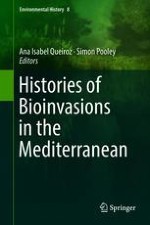2018 | OriginalPaper | Buchkapitel
6. The Xenopus laevis Invasion in Portugal: An Improbable Connection of Science, Mediterranean Climate and River Neglect
verfasst von : Mónica Sousa, Angela Maurício, Rui Rebelo
Erschienen in: Histories of Bioinvasions in the Mediterranean
Aktivieren Sie unsere intelligente Suche, um passende Fachinhalte oder Patente zu finden.
Wählen Sie Textabschnitte aus um mit Künstlicher Intelligenz passenden Patente zu finden. powered by
Markieren Sie Textabschnitte, um KI-gestützt weitere passende Inhalte zu finden. powered by
